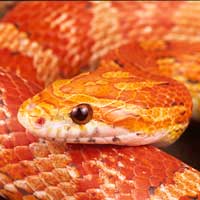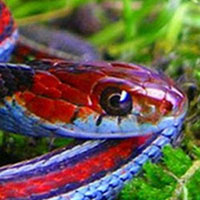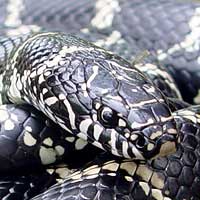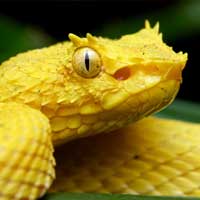Utah Mountain Kingsnake: Everything You Need to Know About This Stunning Species
The scientific name of the Utah Mountain Kingsnake is Lampropeltis pyromelana infralabialis. It belongs to the Colubridae family, which is the largest snake family and includes many non-venomous and mildly venomous species.
Scientific Name: Lampropeltis pyromelana infralabialis
Snake Family: Colubridae
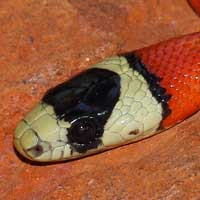
Introduction to the Utah Mountain Kingsnake
The Utah Mountain Kingsnake (Lampropeltis pyromelana infralabialis) is a non-venomous and vividly patterned snake native to the rugged terrains of Utah and surrounding states. Known for its red, black, and white banding, this subspecies is a favorite among reptile enthusiasts. Its small size, docile temperament, and hardy nature make it an ideal pet for both beginners and experienced keepers.
Where Does the Utah Mountain Kingsnake Live?
The Utah Mountain Kingsnake thrives in rocky, mountainous regions, adapting to environments that provide shelter and prey. Its ability to blend into its surroundings makes it a master of camouflage.
Preferred Habitat Features:
- Rocky hillsides and canyons
- Pine and juniper woodlands
- Desert scrublands with scattered vegetation
- Areas near streams and water sources
| Region | Habitat Type | Key Features |
|---|---|---|
| Utah | Rocky canyons | Crevices, loose rocks |
| Arizona | Woodlands | Pine forests, shaded areas |
| Nevada | Scrublands | Sparse vegetation, arid climate |
What Does the Utah Mountain Kingsnake Eat?
The Utah Mountain Kingsnake is a carnivorous predator with a varied diet that supports its survival in diverse habitats. Its hunting efficiency contributes to its adaptability in the wild.
Common Diet:
- Small rodents such as mice
- Lizards
- Birds and their eggs
- Smaller snakes
In captivity, frozen-thawed rodents are the most practical and safe feeding option. Juveniles should be fed every 5-7 days, while adults require feeding every 10-14 days. Always ensure prey size is appropriate for the snake’s size to prevent health issues.
Behavior and Temperament of the Utah Mountain Kingsnake
The Utah Mountain Kingsnake is known for its shy yet curious nature, making it a delight for reptile enthusiasts. While it can be skittish at first, regular handling helps it adapt to human interaction.
Key Behavioral Traits:
- Non-aggressive and docile
- Primarily crepuscular, active during dawn and dusk
- Excellent at burrowing and hiding
- Displays tail vibration or musking when threatened
With consistent handling, the Utah Mountain Kingsnake can become more confident and interactive, making it a rewarding pet for keepers.
Health and Lifespan of the Utah Mountain Kingsnake
The Utah Mountain Kingsnake is a hardy species with a lifespan of 15-20 years in captivity when provided with proper care. Maintaining optimal living conditions is crucial for its health and longevity.
Common Health Concerns:
- Respiratory infections caused by improper humidity
- Shedding issues due to low humidity
- Parasites, particularly in wild-caught specimens
Maintain a temperature gradient of 75-85°F, provide clean water for hydration and soaking, and ensure a clean enclosure to prevent health issues. Routine check-ups with a reptile veterinarian are recommended.
Reproductive Traits of the Utah Mountain Kingsnake
The Utah Mountain Kingsnake is oviparous, laying eggs after mating. Reproduction usually occurs in the spring, with females laying eggs in early summer.
Reproductive Details:
- Mating season: Spring
- Clutch size: 5-10 eggs
- Incubation period: 50-70 days
- Hatchlings are independent and ready to hunt
To breed successfully in captivity, simulate seasonal changes and provide a suitable nesting box. Eggs should be incubated at 82-85°F for optimal results.
How to Handle and Care for the Utah Mountain Kingsnake
Caring for the Utah Mountain Kingsnake involves replicating its natural environment and handling it regularly to build trust.
Handling and Care Tips:
- Handle gently and consistently to reduce stress
- Provide hiding spots and branches for climbing
- Maintain proper humidity and temperature levels
- Offer a diet of appropriately sized prey
With proper care and attention, the Utah Mountain Kingsnake can thrive in captivity, offering years of enjoyment and fascination to its owner.
Other Snakes In This Species
 Albino California Kingsnake
Albino California Kingsnake Arizona Mountain Kingsnake
Arizona Mountain Kingsnake Black Kingsnake
Black Kingsnake Brooks Kingsnake
Brooks Kingsnake California Kingsnake
California Kingsnake Desert Kingsnake
Desert Kingsnake Dot-Dash California Kingsnake
Dot-Dash California Kingsnake Durango Mountain Kingsnake
Durango Mountain Kingsnake Eastern Kingsnake
Eastern Kingsnake Florida Kingsnake
Florida Kingsnake Florida Mole Kingsnake
Florida Mole Kingsnake Goins Kingsnake
Goins Kingsnake Gray Banded Kingsnake
Gray Banded Kingsnake Mexican Black Kingsnake
Mexican Black Kingsnake Mole Kingsnake
Mole Kingsnake Prairie Kingsnake
Prairie Kingsnake Ruthvens Kingsnake
Ruthvens Kingsnake Scarlet Kingsnake
Scarlet Kingsnake Speckled Kingsnake
Speckled Kingsnake Utah Mountain Kingsnake
Utah Mountain Kingsnake Variable Kingsnake
Variable Kingsnake

